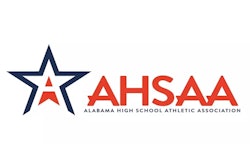![[Illustration by Arnel Reynon]](https://img.athleticbusiness.com/files/base/abmedia/all/image/2016/11/ab.Legal1116_feat.png?auto=format%2Ccompress&q=70&w=400)
This article appeared in the November | December issue of Athletic Business. Athletic Business is a free magazine for professionals in the athletic, fitness and recreation industry. Click here to subscribe.
Schools, and in particular high schools, present a number of issues in terms of city zoning. Schools are often sited close to where students live — within neighborhoods surrounded by parcels of property zoned only for single-family residences. As a result, the residential neighborhoods around schools face a number of unique problems such as increased car and foot traffic during school hours, and increased noise and light pollution emanating from school events.
One problem residents living near schools typically shouldn't have to worry about, however, is decreased property values due to a failure by the school to get city zoning and building approval before building on the property. A good illustration of what can happen when schools do not take into consideration the surrounding neighborhood before building on school grounds is the case of Gruba v. Community High School District No. 1, 40 N.E.3d 1 (Ill. 2015).
'BERLIN WALL OF STEEL'
In Illinois, the Board of Education of Community High School District No. 155 ("the board") decided to replace the bleachers at Crystal Lake South's football stadium, located in the city of Crystal Lake, after they failed structural inspection. The problem was that the larger bleachers opted for by the board would need to be taller than the existing bleachers and closer to neighboring residences.
The area surrounding the school was zoned R-2 residential single family. Before beginning construction on the bleachers, the board sought and received project approval from the County Regional Superintendent of Schools. However, the board failed to notify the City of Crystal Lake of its plans or to get the approval prior to beginning construction.
Following installation of the new $1.2 million bleachers — dubbed the "Berlin Wall of Steel" by angry neighbors — the city informed the board that it was not in compliance with the Crystal Lake Unified Development Ordinance because the board failed to obtain the required permits and zoning variances. As a result, the city told the board to take the bleachers down. The board ignored the order from the city, claiming that it was exempt from the zoning authority of the local municipality because the construction project was on school district property and was for school purposes.
In an attempt to force the board to comply with the local building and zoning ordinances, as well as remove the bleachers, three homeowners living adjacent to the school filed a lawsuit. The lower courts agreed with the city and homeowners and ordered the board to take the bleachers down.
HIGHER BLEACHERS, HIGHER COURT
On appeal, the issue before the Supreme Court of Illinois was whether the school district was subject to local zoning and land-use regulations in the course of exercising its statutory powers to construct new facilities on school property. The board presented three arguments to support its belief that the school was exempt from municipal building and zoning ordinances.
In ruling that its primary goal in statutory interpretation cases was to give effect to the Legislature's intent, the Supreme Court of Illinois reviewed the board's first argument — that the Illinois General Assembly had exempted certain entities from municipal zoning regulations and that the board fell into this category. In rejecting this argument, the court found no statute limiting a municipality from regulating zoning on school property. In addition, the court found that since Crystal Lake was a home rule municipality (a municipality with the power to perform any function not expressly granted to the state or federal government as long as it is not in violation of any state or federal law), it had even greater authority to impose its zoning ordinances on the board, since no federal or state legislation preempted it.
The board's second argument was that subjecting schools to municipalities' zoning ordinances would unduly interfere with the General Assembly's constitutional authority to regulate the public education system. In rejecting this argument, the court found that the school code approved by the General Assembly supported the position that the General Assembly actually intended to make schools subject to municipal zoning laws. In support of this finding, the court noted that section 10-22.13a of the school code authorizes a school board "to seek zoning variations, or special uses for property held or controlled by the school district." Therefore, the court held that it would be illogical to find that the school board did not have an obligation to seek zoning approval. The most natural reading of the legislation, the court held, was that schools fall within local zoning regulations and therefore need to request variances to be in compliance. The court also held that this interpretation was not part of a plain language reading of the provision.
The board's third argument was that it was exempt from municipal zoning schemes because the Health/Life Safety Code for Public Schools passed by the Illinois General Assembly limited the ability of municipalities to review and inspect school construction plans. In particular, the board pointed to the provision of the Health/Life Safety Code that stated that municipalities were authorized to register with the regional superintendent of schools to receive notice of school construction plans and then object in writing to the plans. Since Crystal Lake did not register to be notified, the board argued that it should be unable to now object to the project.
In rejecting this argument, the court found that the Health/Life Safety Code was a building code, which has different goals and purposes than local zoning regulations. Therefore, since zoning ordinance concerns such as size, height and property lines are not addressed in building codes, the court rejected the board's argument that the Health/Life Safety Code preempted or limited the city's authority over land use within its jurisdiction.
NEW LEGISLATION
The decision by the Supreme Court of Illinois in favor of Crystal Lake and the homeowners — and thereby forcing the board to remove the new bleachers — should send clear messages to school boards across the country.
First, as a result of the lawsuit, Illinois passed legislation clarifying that school districts must comply with local zoning laws when they erect school buildings or other facilities. When planning a new building project on school property, it is important that school boards obtain proper zoning and building permits from the city in order to save the type of trouble and expense experienced by the school board in Gruba v. Community High School District. It's surprising that, as members of the same city government, the school board spent hundreds of thousands of dollars fighting the city and some of its residents over the high school's bleachers.
Second, before any new construction begins, all entities involved should sign off on the proposed project. Beyond obtaining local government approval, the school board would have done well to meet with neighborhood residents to get their blessing as well. While it might be impossible for all members of the community to agree on building plans, it is still important to hear their concerns and seek their support in advance of actual construction.
Attorney John Wolohan is a professor of sports law in the David B. Falk College for Sport and Human Dynamics and adjunct professor in the College of Law at Syracuse University, where Samuel Cohen is a second-year law student.
This article originally appeared in the November | December 2016 issue of Athletic Business with the title "Zoning regulations dismantle school's bleachers"




































